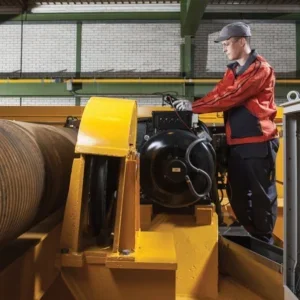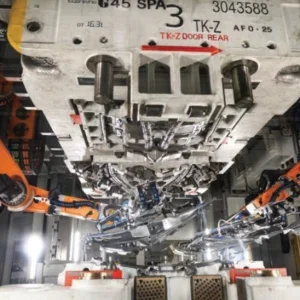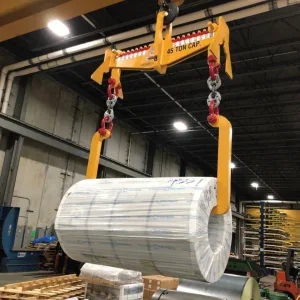As we reach mid-2014, most Western European countries are still picking up the pieces, but there has been some genuinely promising activity of late, cautiously reflected in the crane market.
Western Europe, whose economies have deep ties with each other, suffered together during 2008-2009, with economic activity in the region contracting sharply. The Euro, the currency shared by the majority of the region, suffered badly, weighed down by economic turmoil in countries including Greece and Ireland.
Singled out for more imminent recovery by many is the UK. Although the British pound fared little better than the Euro until last year, it has since soared against both it, and the US dollar following a surprisingly optimistic forecast from the Bank of England (BoE).
Andrew Pimblett, managing director of Street Crane Company, says the UK is currently an outlier among the Western European countries. "The UK is looking up astonishingly and we have noticed an enormous turnaround since Christmas. Enquiries are through the roof here.
The types of orders we are getting from construction have mainly come from glass distributors and the precast concrete industries, but many other industries are performing strongly, driving the crane market."
Worldclass manufacturing Pimblett singles out British success stories such as Jaguar Landrover, where his company recently installed a 60 tonne crane. "The UK is proving it still has a worldclass manufacturing reputation but engineering companies are largely export driven," he adds.
Daniel Upton, sales director, Niko agrees that the UK is very strong compared to 18 months ago. He adds: "We operate predominantly in the UK, with sister distributors in Europe. In the past when we asked companies how they were doing, they were either very busy or reporting nothing at all. Now, however, they all seem to be very busy with no exceptions. It’s going from strength to strength in markets across the board".
The Construction Intelligence Centre (CIC) report backs up these observations, citing signs of recovery towards the end of 2013 for the Western European construction industry, which traditionally is tied to the crane sector’s performance. It claims the industry underwent a difficult period during much of 2012, but increased by 1.3% in 2013, and was up by 4.3% annually in the fourth quarter of the year.
"This growth was supported by government investments in infrastructure and affordable housing schemes. The forecast-period outlook is positive due to declining unemployment rates, consumer and investor confidence, population and urbanization growth," the report reads.
The picture is less certain for Ireland, according to Upton, who says that although the country has picked up recently, it still has a long way top go.
"Northern Ireland has historically had a lot of problems but there are signs that it is improving, especially in Northern Ireland, where we have recently made some sales, but it is early days for their economy as a whole," he adds.
In the UK’s most recent Budget, chancellor George Osborne said the economy is continuing to recover – and faster than forecast. However, he warned that borrowing is too high, and that the country does not invest, save or export enough. It’s a position that Carl Cooper, sales and aftersales manager at Hird, can relate to. He says that, although there has been a surge in demand for rentals from his company, there is still reluctance to committing to buying equipment outright.
He adds: "There have been a lot of enquiries about purchasing new kit but people are very scared still to put their hands in their pockets. One of the problems with this is that it is inherently more expensive to rent in the long term than buying equipment out right. It’s a problem that is echoed throughout Europe."
Gloomy outlook?
Across the Channel, the outlook is gloomier. "Punishment" was the recent front-page headline in French leftist daily newspaper Liberation, reflecting the ill ease felt by many in the country. The article asks how the two-year rule of the Socialist president has hit the pockets and jobs of voters as the country fades from its former glories.
Meanwhile, the public debt burden in France has risen while the jobs market has also suffered. The number of unemployed people was up by 0.9 percent in February from the same month last year, hitting a record 3.34 million. And, more days are lost in France through industrial action than in any other European Union state.
Pimblett says that France is among many Western European countries that are struggling, with an uncertain outlook.
"France is still pretty dead for us. It’s part of a trend we’re seeing that is echoed throughout many of the big crane markets of the nineties – like Italy, Spain and Portugal – which are becoming just a shadow of their former selves," he adds.
According to the CIC report however, France has greenshoots emerging. The country had the largest construction industry in Europe with a value of EUR268.0 billion in 2013. It recorded a slowdown last year, but in the fourth quarter of 2013, production and investment in the construction industry began to show signs of recovery, and registered a 0.5% growth in output, compared with the fourth quarter of 2012.
What’s needed in France, and indeed Europe, according to Carl Cooper, sales and aftersales manager, Hird, is more confidence. "Manufacturers and dealers can’t do much more in my opinion, they had already cut costs enough and it’s very lean market. A lot of big factories are uneducated still and think that a forklift is a crane. When an accident happens, and they have to pay the price, it soon becomes clear to them, but sadly it’s often too late," he adds.
Central focus
Central to this Western European recovery is Germany, which is politically and economically influential in Europe. According to Timetric projections, Germany’s real GDP is likely to expand by 0.4% in 2013 and 1.5% in 2014, supported by a rise in private consumption.
Economic activity in the Eurozone will play an important role in the recovery too, affecting investment and exports.
The German economy is projected to grow in the range of 1.7-3.2% between 2015 and 2017 and the government has expressed optimism despite concerns about the fallout from Ukraine. Germany’s central bank is pencilling in growth of 1.7 percent for 2014 followed by two percent for 2015 and the European Commission is projecting growth rates of 1.8 percent and 2.0 percent respectively.
The outlook for the German construction industry however is less rosy. A recorded shortage in workforce prospects for the industry is expected to worsen over the coming years.
Meanwhile, owing to a decline in fertility rates, the working age population (aged between 20 and 65 years) is anticipated to decline from 49.6 million in 2008 to 42.1 million in 2030 and 32.6 million by 2060.
Scott D Miller, operations agent at Crane Freight Services, is watching Germany and Western Europe closely, and says that various markets will fuel growth. He adds: "The automotive sector continues to expand, but with fewer employees, they must relay on a constant and dependable production line. Electric chain hoists might seem like a minor tool in their arsenal of production equipment, but as the old saying goes ‘a chain is only a strong as its weakest link’."
Heavy manufacturing
He also points to a resurge in heavy manufacturing, with production ramping up throughout Europe and attitudes changing. "There is less acceptance of down time. Companies now realize they must install quality equipment that holds up to their demanding applications. Like pre-shock days – when the factories are running near capacity – they recognize paying 20% more for product that lasts two times as long is a good investment. They must relearn how this costs them less over the products lifetime," he adds.
The picture in Spain, the Eurozone’s fourth largest economy, is still dire but the future forecasts are generally optimistic. Its economy will grow by 1.2% this year, according to predictions announced in April by the central bank. The financial forecasts indicate a gradual and modest recovery, with the gross domestic product growing by a further 1.7% in 2015.
The Spanish economy finally grew by 0.3% in the fourth quarter of 2013. The outlook of the construction industry is expected to be positive with growth supported by various infrastructure projects including expansion of road and rail infrastructure, government schemes such as the Golden Visa to support the residential market, increased investor sentiment across Europe and improved export demand.
Cooper says that, although Hird have been trading more frequently with Spain, the country is still scared to spend big – a trend also seen throughout most of Western Europe. "We’ve been selling kit to Spain. They, like everyone else, are still scared to spend outright and are still renting. Europe is the same. They all want to spend but they’ve not got the resources.
Elsewhere, reports from Spain’s second-biggest bank, BBVA claim that Spanish unemployment could take 10 more years to return to the levels seen before the financial crisis. Its report paints a picture of an economy hampered by low wages, low skills and lack of investment in research with Spanish workers earning 20%-40% less than those in other leading European countries.
Timetric expects the Spanish construction industry to record a forecastperiod (2013-2018) CAGR of 2.54% to value EUR162.9 billion (US$229.5 billion) in 2018. Uncertain economic conditions and weak business confidence led to a decline in the market in recent years.
However, it is anticipated to record a forecast-period CAGR of 1.58% to value of EUR15.4 billion (US$21.7 billion) in 2018. The growth in commercial construction will be driven by increased retail sales and upcoming projects over the forecast period.
This cycle is understandable after such a deep financial shock, according to Miller, who is optimistic that business will pick up. "Immediately after such a dramatic event [the economic crash], companies push hard to cut costs, stay profitable or simply survive. One of the easiest ways to reduce is to tolerate lower cost and lower productivity products.
This tendency is true for both direct purchases that go into the products a manufacturer makes, and the indirect purchases they use to keep their factories running. Obviously, hoists and cranes fall into the latter category. We expect this "upgrading" trend to continue, as we expect several industries to continue their slow, steady growth."
Steady growth
Slow, steady growth is exactly what is predicted for Holland’s economy. The country’s economic growth was severely affected by the European financial crisis, resulting in the accumulation of national debt, which contributed, to 75% of GDP in 2013. In a bid to reduce the debt, the government implemented various austerity measures such as a reduction in public spending.
The Dutch construction industry recorded a compound annual growth rate (CAGR) of -4.10% during the review period (2009-2013) and valued EUR70.8 billion (US$93.9 billion) in 2013.
Holland’s construction industry growth rate is expected to recover as a result of economic recovery and government efforts to retain the country’s attractiveness as a business centre. The industry’s output is expected to increase at a CAGR of 2.02% over the forecast period (2014-2018), to reach a value of EUR78.2 billion (US$110.2 billion) in 2018.
The International Monetary Fund (IMF) echoed this optimism. Its latest forecast sees the Dutch economy growing by 0.8 per cent this year, possibly growing to 1,6 percent in 2015. This growth came mainly from increased car sales, as many people decided to use tax provisions, expiring at the end of 2013. Currently, the IMF expects the Dutch deficit to drop from 3.1 to 3.0 percent of GDP in 2014, with an improvement of a decrease to 2.0 per cent in 2015. Further estimates have it shrinking to 1.0 per cent in 2018 and just 0.6 per cent in 2019.
As well as looking at Western Europe on a country-by-country basis, Miller, says that looking at its various market sectors is also crucial. Western Europe’s oil industry is of concern for Miller, who reports that demand has remained strong in the market.
He says: "The world’s appetite for petroleum remained quite strong, even after the [financial] shock. There was some decline, but not nearly as much as most manufacturing. And while newer extraction technologies such as hydrofracking have made many onshore fields cheaper to produce, the value of new supplies remains high."
He adds that the catalyst was how a close-knit industry started to rethink their manual chain hoist and general lifting practices after an accident involving injury. "The community that is the North Sea oil industry knows very well what happens in one company or the other – they sense security is "in numbers", and in doing it the same way as the others.
Over the last decade theirs’ was a trend to cheaper lifting products. But everything changes when they see the cost of an accident in human terms, in lost revenue, and in litigation. They quickly see the payoff from investing the time and money to assemble a fleet of quality lifting tools."
So, just as the Western European economies suffered as one during the 2008 crash, it would appear that on the whole, they are set to recover as one. Every Western European country has been subject to large debts and financial setbacks in recent years, as have many of its companies.
Growth then, is likely to happen slowly but surely, with confidence being a critical factor.






